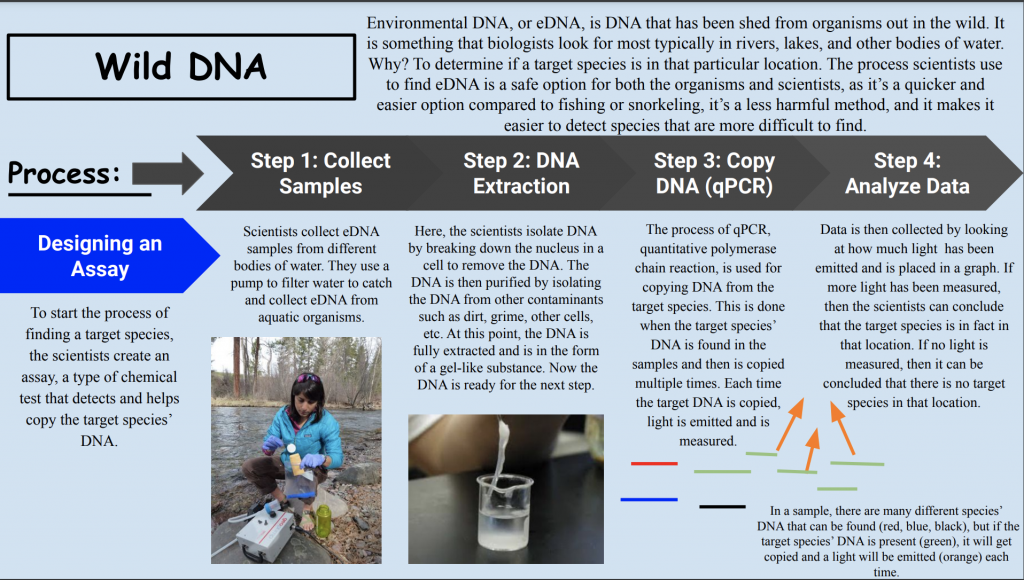Sleuthing for wildlife DNA in Beaver Creek
March 21, 2021
Students in BI 212 recently wrapped up an eDNA study of Beaver Creek, just north of Seal Rock. Otherwise known as environmental DNA, it is DNA that is shed by animals in tiny amounts as a consequence of normal activities, such as swimming or walking. eDNA allows biologists to non-invasively determine what species are present in an environment. This is especially useful for rare or hard-to-detect species.
In January, biology students collected samples in Beaver Creek and nearby Simpson Creek to look for Coho salmon, freshwater mussels, and Pacific lamprey. Students then partnered with the National Genomics Center for Wildlife and Fish Conservation, based in Montana, to conduct genetic analysis of their eDNA samples. All species were detected, except for one species of freshwater mussel. This information helps biologists monitor rare species that are threatened with extinction, such as Coho salmon. The accompanying infographic, developed by one of the students, explains eDNA technology.
(Click image to open higher-res PDF.)



